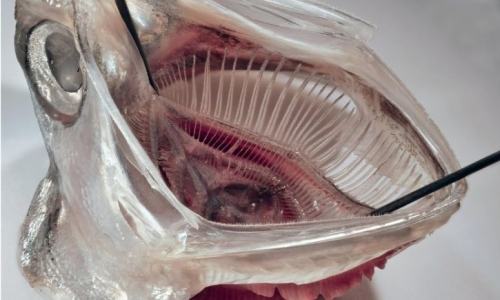


 11:47:31
11:47:31  2022-12-27
2022-12-27  1205
1205
First, these birds had a maximum of nine feathers per square centimere—a lower density than any of the earlier reports suggested. That’s nowhere near the record for birds. The white -throated dipper, a small Eurasian bird that forages in cold mountain streams, has plumage that’s six times more dense.
Second, Williams found certain types of feathers that she wasn’t expecting. Many studies assume that emperor penguins insulate themselves from the bitter cold of Antarctica’s waters using afterfeathers—small downy plumes that are attached to their main feathers. Williams found plenty of afterfeathers on her birds, but also four times as many plumules—a separate type of downy feather that attaches directly to the skin.
This is rather ironic. Despite several attempts to model the insulating powers of penguin skin, every study has ascribed those powers wholly to the afterfeathers. The plumules, which are far more numerous, were first mentioned a century ago and have been almost entirely ignored since then.
Williams also found a third category of feather—filoplumes—that no one had mentioned at all. These are tiny structures, less than a centimeter long, with a naked shaft that ends in a splay of fine filaments. These sit at the base of flight feathers and supposedly sense organs, which tell flying birds when their plumes have become displaced. They’re so synonymous with flight that some sources say that filoplumes don’t exist on penguins, ostriches, and other flightless birds. Clearly, that’s wrong.
“We were a little surprised to see filoplumes on the penguin body,” says Williams. “But thinking about it, it makes as much sense for penguins to preen body feathers to maintain a slick, waterproof exterior, as it does for flying birds to preen their wing feathers to reduce drag in flight.”
Although Williams only looked at four penguins, she says that the pattern and density of feathers isn’t likely to vary much within the population. “They all face the same harsh Antarctic winters and dive in freezing waters, so the insulation requirements are the same,” she says. “Of course we would have preferred a larger sample size, but it is very difficult to obtain fully preserved penguin carcasses.”
“These results certainly have implications for penguin conservation and health,” adds Williams. “If these penguins were caught in an oil spill, it would be almost impossible to clean the feathers. The “fluffiness” of the downy feathers is a key component of the insulation properties and oily downy feathers would destroy this component.”
Reality Of Islam |
|

Researchers

A new chip-

A large inf

Choosing th
 9:3:43
9:3:43
 2018-11-05
2018-11-05
10 benefits of Marriage in Islam
 7:5:22
7:5:22
 2019-04-08
2019-04-08
benefits of reciting surat yunus, hud &
 9:45:7
9:45:7
 2018-12-24
2018-12-24
advantages & disadvantages of divorce
 11:35:12
11:35:12
 2018-06-10
2018-06-10
 6:0:51
6:0:51
 2018-10-16
2018-10-16
 2:2:13
2:2:13
 2022-10-08
2022-10-08
 7:34:7
7:34:7
 2023-02-28
2023-02-28
 3:18:29
3:18:29
 2022-12-24
2022-12-24
 9:42:16
9:42:16
 2022-10-19
2022-10-19
 6:14:3
6:14:3
 2023-01-18
2023-01-18
 3:42:22
3:42:22
 2021-12-24
2021-12-24
 5:57:34
5:57:34
 2023-03-18
2023-03-18
 5:41:46
5:41:46
 2023-03-18
2023-03-18
| LATEST |